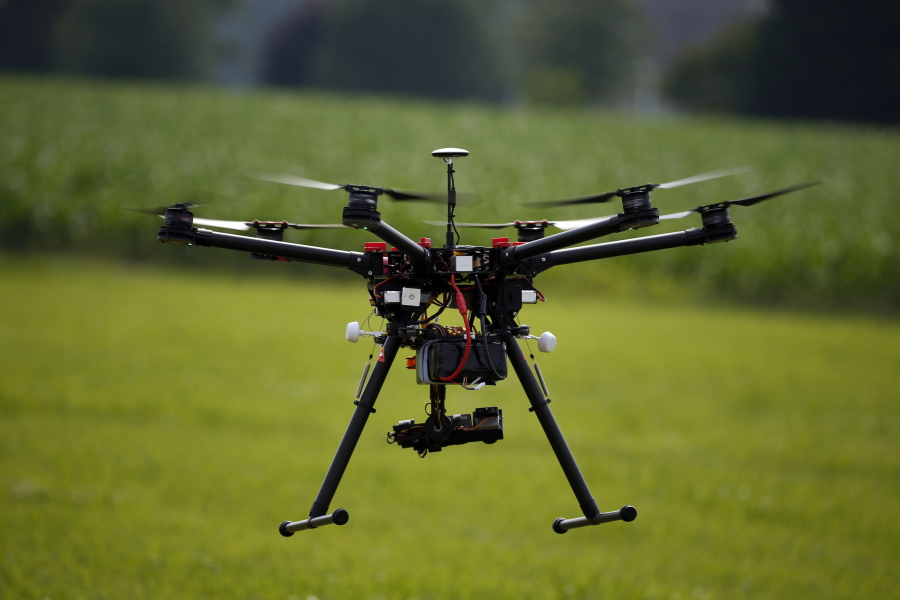CHICAGO — New drone rules from the Federal Aviation Administration limit small unmanned commercial aircraft to 55 pounds and require use in daylight in most cases, but also give operators a way to fly higher than under initial regulations.
The final rules, made public Tuesday, help govern a now-nascent industry that the FAA, citing industry forecasts, said could become an $82 billion business with more than 100,000 jobs over the next decade. The rules are needed so the remote-controlled drones can co-exist in the skies with commercial airplanes.
The FAA already had given special permission for more than 6,000 drones to be used while it worked on the rules.
The regulations address height and speed restrictions and other operational limits, such as prohibiting flights over unprotected people on the ground. For example, the drone may fly 400 feet above ground level, or, under the final rules, go higher than 400 feet if it remains within 400 feet of a structure. Initially, the FAA allowed drones to fly up to 200 feet, but earlier this year raised the ceiling to 400 feet.
Some drone operators who had received permission to fly drones were breathing a sigh of relief upon seeing the rules.
“It will open up a lot of possibilities and give us more flexibility,” said Ryan Koverman, co-founder of Windy City Drones in Chicago. He cited the ability to fly higher near a structure, as well as what appears to be more leeway to get closer to airports.
Troy Walsh of Drone Media Chicago called the rules “exciting news.”
“Up until now, we have had to operate under what’s known as a section 333 exemption in lieu of having official guidelines to operate our drones commercially,” he said.
The final rules “will take much of the burdensome requirements to operate drones commercially, under section 333, out of the equation,” while providing guidelines, Walsh said.
Dan Isaacson, chief executive of Elgin-based CAVU Videos, called the FAA’s new rules “relaxed” and was surprised they don’t require insurance.
“The FAA’s decision is far more accommodating than anyone expected,” he said. “For the past few years, the FAA has been waving the yellow flag of caution to drone operators, but today they waved the green flag.”
Other major companies that applied for permission to use drones include Dow Chemical, General Electric and Microsoft.
The FAA rules also call for the drone to remain in a visual line of sight of the person operating the flight controls or of an observer. The drones may only operate in daylight,
The person flying a drone must be at least 16 years old and have a remote pilot certificate, or be directly supervised by someone with one. One way to qualify for a remote pilot certificate is to pass an initial aeronautical knowledge test at an FAA-approved center.



